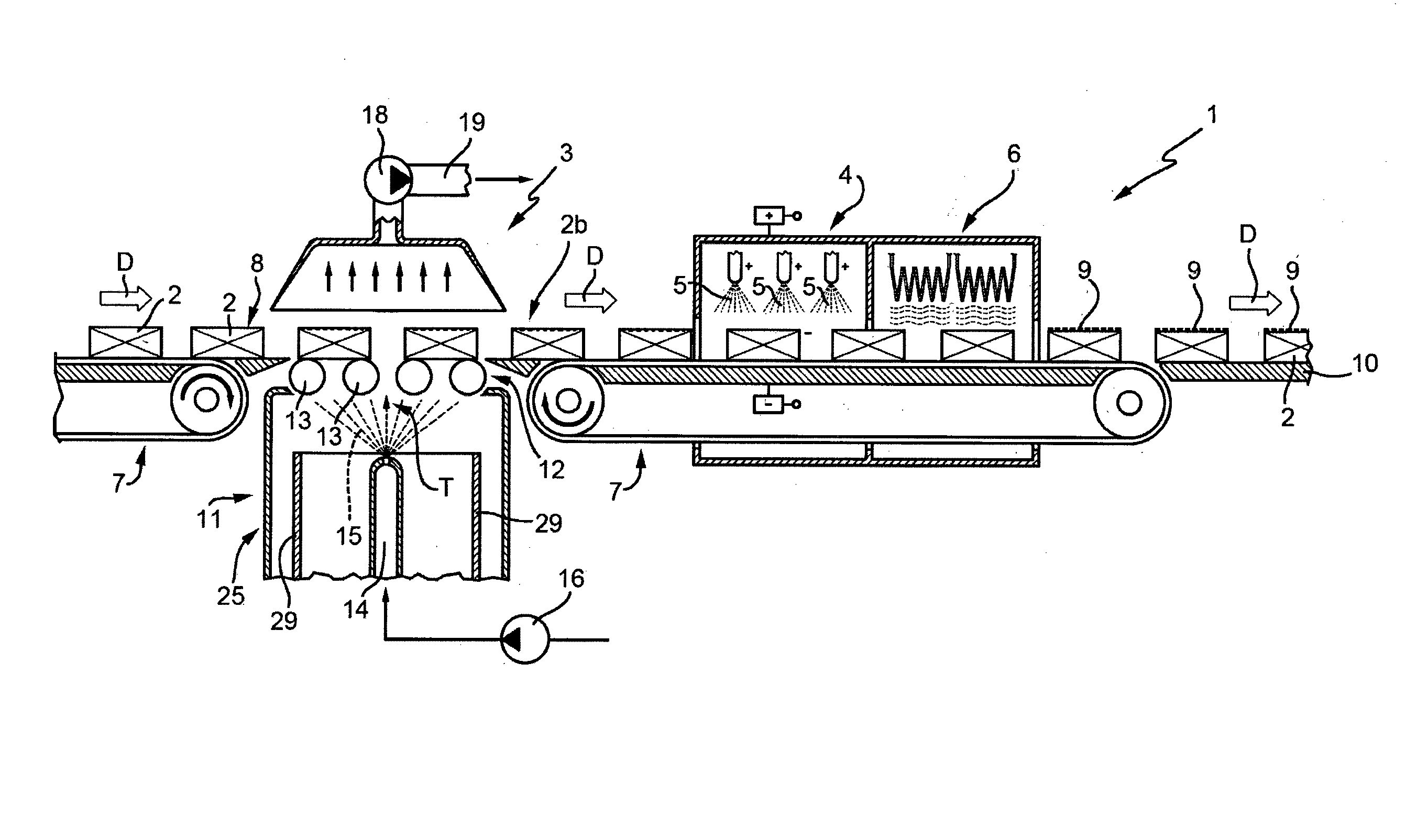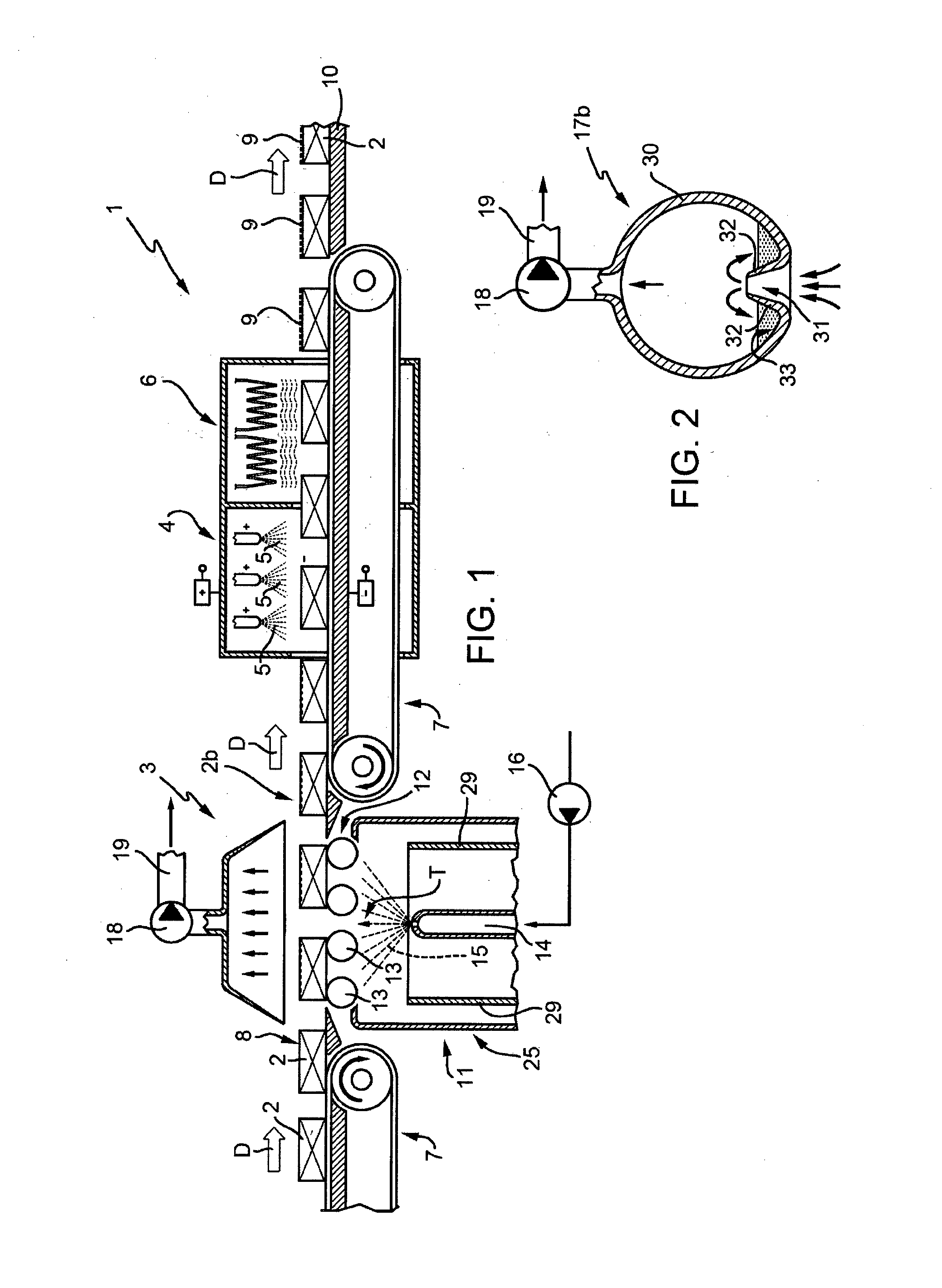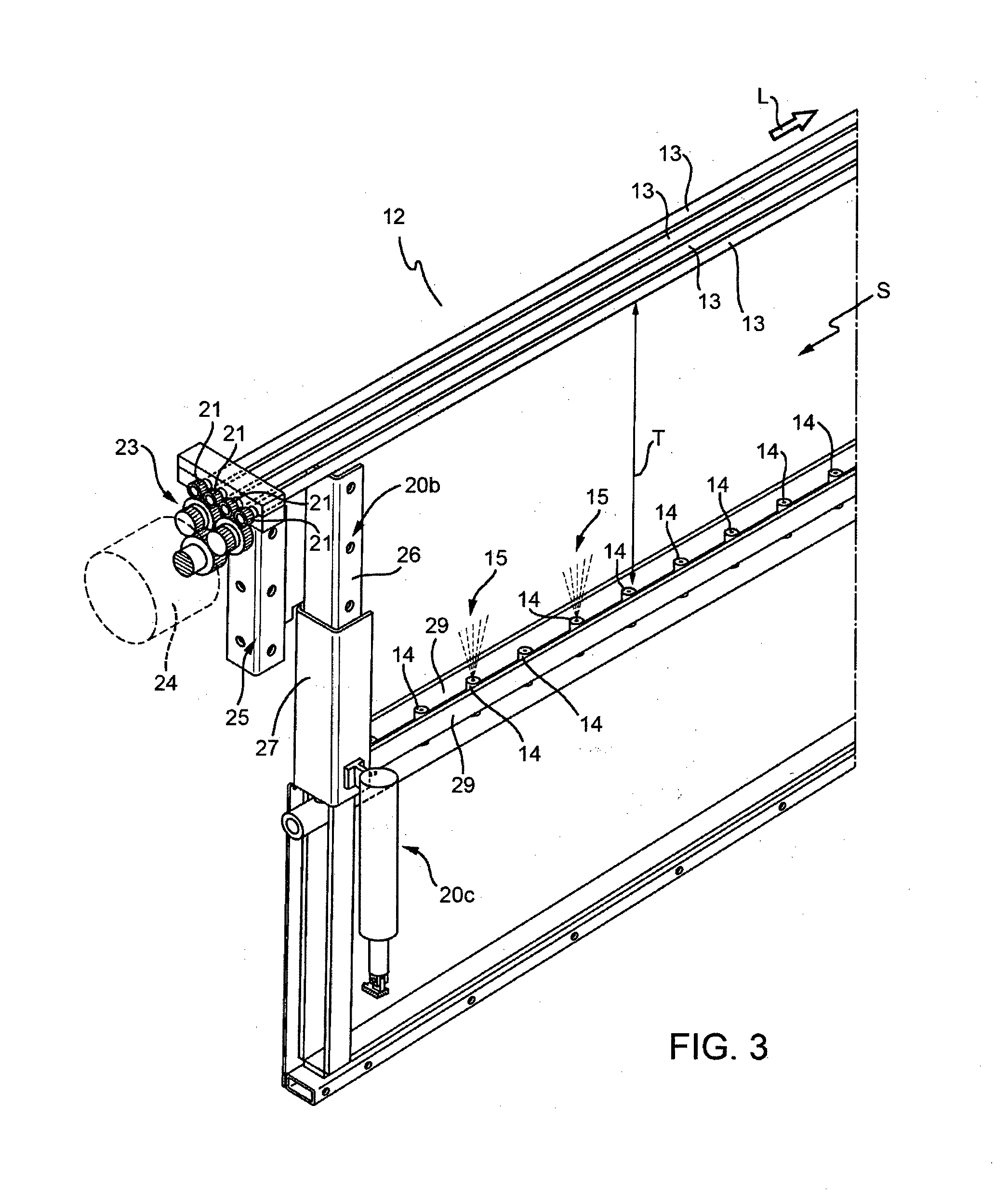Powder coating (electrostatic painting) method and plant for non electrically conductive elements, and in particular brake pads
- Summary
- Abstract
- Description
- Claims
- Application Information
AI Technical Summary
Benefits of technology
Problems solved by technology
Method used
Image
Examples
Embodiment Construction
[0029]With reference to FIG. 1, is depicted a powder coating plant, overall indicated with reference number 1, for painting non electrically conductive elements 2, in particular brake pads manufactured with asbestos-free organic friction compounds, known in the art and therefore not shown in detail but only illustrated as blocks.
[0030]Said type of brake pads are initially manufactured by molding the compound at a temperature of between 130 and 200° C. in order to create a plaque or pad, which are subsequently cured by thermal treatment, assembled onto an iron metal support, and finally painted together with the support.
[0031]NAO brake pad compounds obtained in this manner however, using previously existing technologies, cannot be powder coated but only spray painted, with all the associated issues, including protection of the environment, that this implies.
[0032]According to the invention, on the contrary, the powder coating plant 1 is utilized, which in general comprises a pre-trea...
PUM
| Property | Measurement | Unit |
|---|---|---|
| Temperature | aaaaa | aaaaa |
| Temperature | aaaaa | aaaaa |
| Pressure | aaaaa | aaaaa |
Abstract
Description
Claims
Application Information
 Login to View More
Login to View More - R&D
- Intellectual Property
- Life Sciences
- Materials
- Tech Scout
- Unparalleled Data Quality
- Higher Quality Content
- 60% Fewer Hallucinations
Browse by: Latest US Patents, China's latest patents, Technical Efficacy Thesaurus, Application Domain, Technology Topic, Popular Technical Reports.
© 2025 PatSnap. All rights reserved.Legal|Privacy policy|Modern Slavery Act Transparency Statement|Sitemap|About US| Contact US: help@patsnap.com



